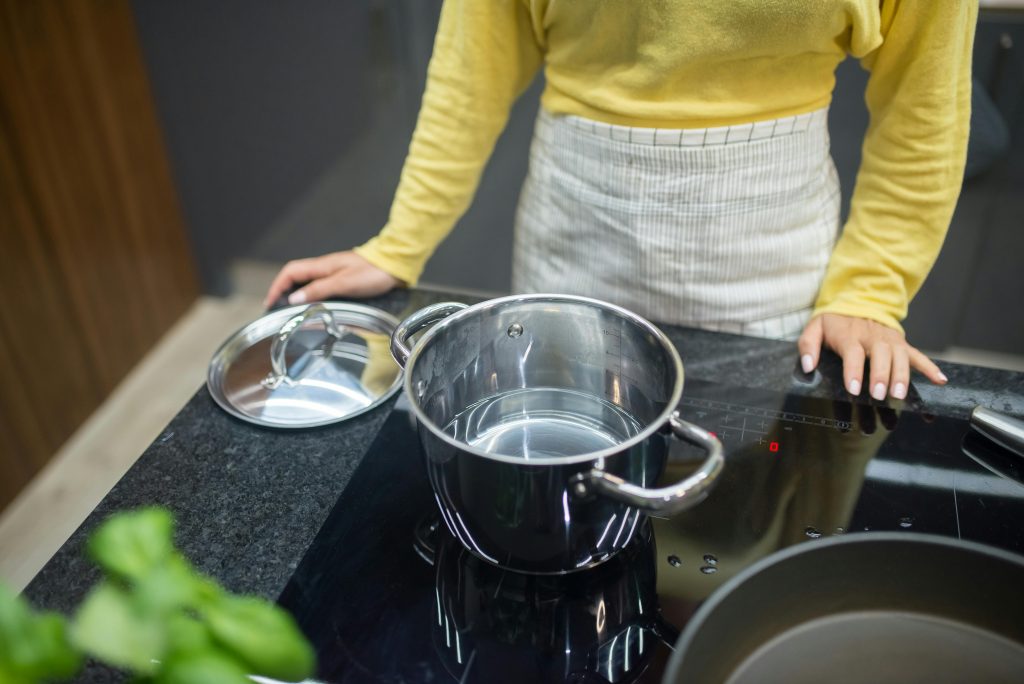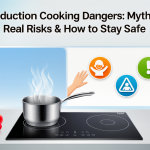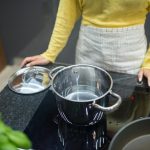
How Does Induction Cooking Work? The Modern Kitchen’s Secret Weapon
If you’re wondering how an induction cooktop works — and why it’s quickly replacing gas and electric stoves in many modern kitchens—you’re not alone. Induction cooking is not only fast and efficient but also uses advanced electromagnetic technology that feels like something out of science fiction.
Let’s break it down into plain language.
⚙️ The Basic Principle of Induction Cooking
Unlike gas or electric stoves, induction cooktops don’t use flames or heated coils. Instead, they use electromagnetic fields to directly heat your cookware.
Here’s how it works:
- Underneath the smooth glass-ceramic surface of your induction cooktop lies a copper coil.
- When you turn it on, the coil produces an alternating electric current, which creates a spinning magnetic field.
- When you place a pan made of ferrous metal (like cast iron or magnetic stainless steel) on top, the magnetic field passes into the pan.
- This interaction causes the iron molecules in the cookware to vibrate rapidly, generating heat directly inside the pan.
✅ No open flame. No hot coils. Just instant, precise heat—right where you need it.
🔍 Why Induction Cooking Is So Effective
Induction technology is widely praised for its efficiency, precision, and safety. Here’s why:
- Faster cooking: Induction transfers energy directly to your cookware, cutting cooking time by up to 50% compared to gas.
- Precise temperature control: Modern cooktops let you adjust heat in small increments, similar to professional kitchens.
- Cooler kitchens: Since only the cookware heats up, the surrounding air stays cooler—ideal for summer cooking!
- Safety first: No flame or red-hot coil = fewer fire risks. Plus, the cooktop stays cool to the touch (unless a pan is on it).
🔬 What Kind of Cookware Works with Induction?
Not all pots and pans will work on an induction cooktop. You’ll need induction-compatible cookware, which must be made of magnetic material.
✅ Compatible materials:
- Cast iron
- Magnetic-grade stainless steel
- Carbon steel
❌ Not compatible:
- Aluminum (unless it has a magnetic base)
- Glass
- Copper
- Ceramic
🔍 Pro Tip: Use a magnet to test your pans. If the magnet sticks to the bottom, it’ll work with induction!
🧠 Fun Fact: The Science Behind the Heat
Think of induction like a miniature electrical transformer. The oscillating magnetic field from the cooktop interacts with the metal pan, generating eddy currents. These currents cause resistance within the metal, which produces heat.
You’re not just heating the surface—you’re energizing the pan from within. That’s why induction is so efficient.
🧼 Cleaner Cooking, Healthier Kitchens
Because there’s no combustion or exposed heating elements:
- There’s no smoke, no carbon monoxide, and fewer fumes.
- Cleanup is easier. Spills don’t burn onto the surface.
- Surfaces stay cleaner and safer for families with kids.
✅ Advantages of Induction Cooking at a Glance
| Feature | Induction | Gas | Electric |
|---|---|---|---|
| Speed | 🔥🔥🔥🔥🔥 | 🔥🔥🔥 | 🔥🔥 |
| Efficiency | ~90% | ~60% | ~70% |
| Safety | ✅ | ❌ | ⚠️ |
| Control | Precise | Medium | Slower |
| Cleanliness | Easy | Moderate | Moderate |
❓FAQ: How Induction Cooking Works
Q1: Is induction cooking safe for health?
A: Yes. There’s no flame, less heat exposure, and no harmful emissions. EMF levels are minimal and considered safe by global standards.
Q2: Does an induction cooktop work without special pans?
A: No. Only cookware with a magnetic base will work. Use a fridge magnet to test compatibility.
Q3: Can induction cooking replace gas for serious cooking?
A: Absolutely. Induction offers instant heat, precise control, and even works better for tasks like boiling water or simmering sauces.
Q4: Do induction cooktops require special installation?
A: Some models plug into standard outlets, but others (especially built-in versions) may need a dedicated power line.
🏠 Conclusion: Should You Switch to Induction Cooking?
If you’re looking for a faster, cleaner, and safer way to cook, induction cooktops are hard to beat. The science behind induction cooking may sound complex, but the benefits are simple: time savings, energy efficiency, and healthier kitchen environments.
Just make sure your pots and pans are compatible, and you’ll be ready to harness the power of magnetic fields for your next meal.


Leave a Reply
You must be logged in to post a comment.